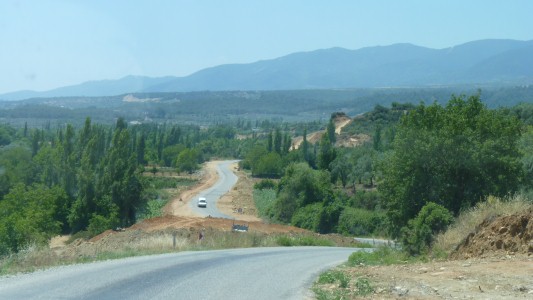
At last away from major roads onto quieter, smaller, more intimate and interesting, roads.
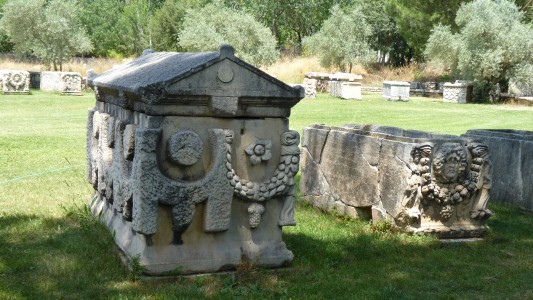
Used locally and exported.
"Just" one of many sarcophagae in the grounds of the museum.
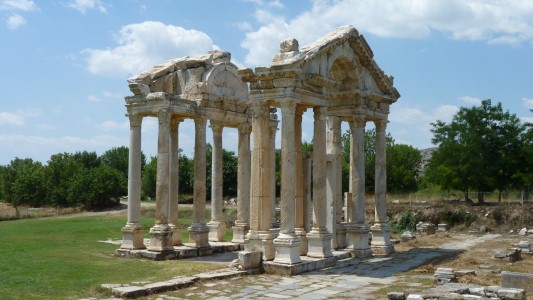
Aphrodisias had a sanctuary in 6th century BC but it was developed in 2nd and 1st centuries BC after a new town was planned. Patronage from the Emperor Augustus.
Provincial capital i 3rd century AD, fortified wall in 4th century AD.
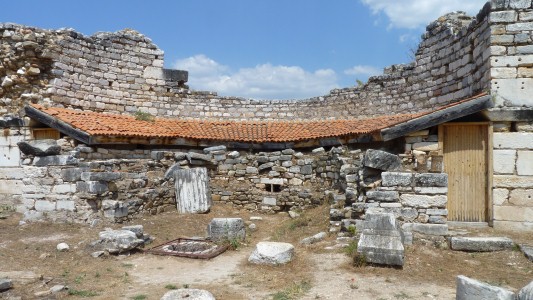
Much moving of columns (as one does).
This looked like the altar end.
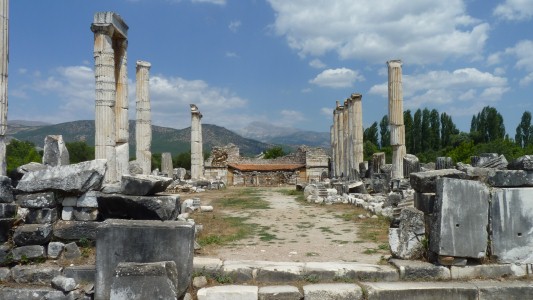
Aphrodisias was a small cathedral town until abandoned in the 12th century.

In which houses, including Tineios House, were built.
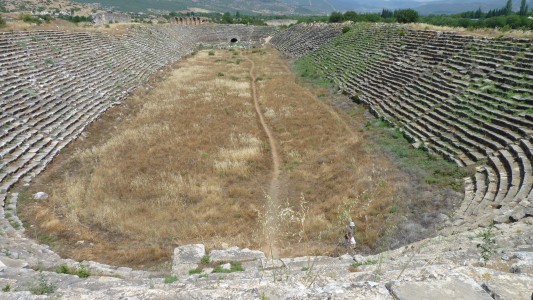
A sort of "wow" as we first stood on the rim.
270m long, 30,000 people.
Greek style athletics and Roman gladiatorial stuff.
Corporate boxes were alive and well with inscriptions on seats for groups and individuals.
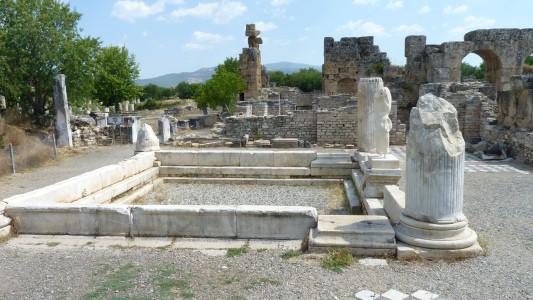
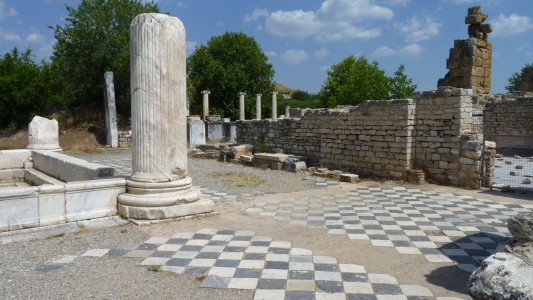
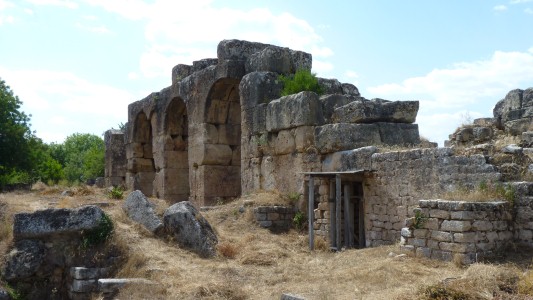

Surrounded by colonnades.
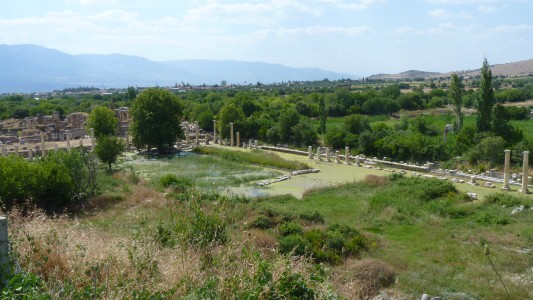
We investigated the water system, coupled to the baths, for a while but couldn't make sense of it.

Most of the buildings seem to have been built with the help of Zolios.
Local who was enslaved then aquired by Octavius and later freed.
Somehow was rich when he returned home.
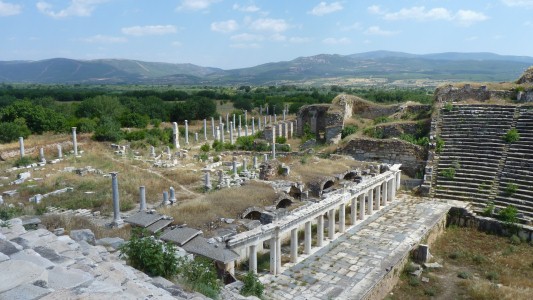
But a bit of rope discouraged us.
Couldn't find the road on the 3D presentation in the museum.

Disturbingly reminiscent of skulls in the Killing Fields of Cambodia.

Stadium at the front. South Agora pool in the centre.
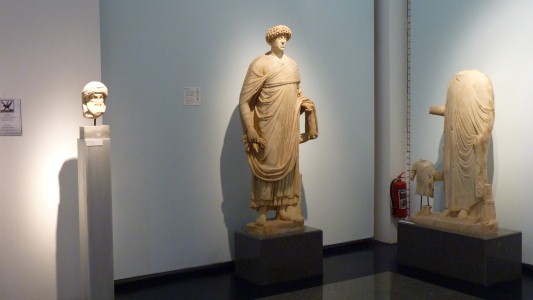
This is Flavius Palmatus.
Roman Senator about AD 500.
The statue was originally in front of the theatre.
I guess the clothes and hat went with the job.
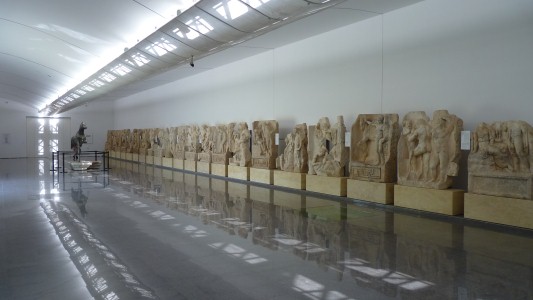
Three storeys.
The top floor was for Emperors, Gods and Victories. Corinthian columns.
Second floor for Heroes and Gods. Ionic columns.
Ground floor for ? Doric columns.
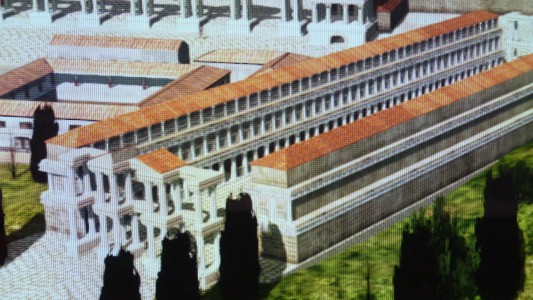
Of about 200 reliefs there are 80 remaining to be displayed in the museum.
For some unexplained reason the Sebasteion is at an angle to the rest of the town. Off-grid so to speak.